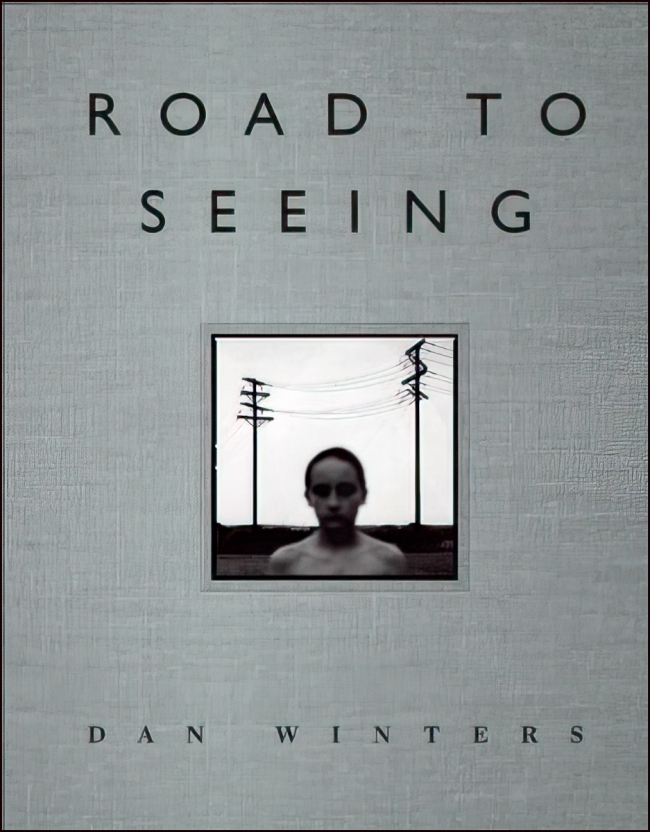Last month I posted a YouTube video of an interview with Dan Winters (See: Interesting Interview with Dan Winters). I didn’t really know his work and It interested me enough that I decided to get one of his books, specifically “Road to Seeing”. I usually order hardcover versions of photobooks, but this time I was impatient and I ordered the Kindle version. The fact that the hardcover version was over six times more expensive may also have had something to do with it! I don’t recommend that you do this unless you have the flashier color versions (or are willing to read it on your computer) as many of the images are in color and you lose a great deal by viewing them in black and white.
In his introduction he states: “My purpose in writing this book is rooted in a desire to share, on a human level, some of the moments in my life that have significance to me as a photographer, and a man” so it is at least in part autobiographical.
The book features many beautiful images. But in addition each chapter tells the story behind the image and how it was created. His focus, however, is not on technical matters. Rather he concentrates on such areas as what he was thinking in the run up to the photograph; how he collaborates with his subjects etc.
In addition to Winter’s own pictures the book contains many photographs from such photographic luminaries as : Alfred Stieglitz, Lewis Hine, Dorothea Lange, Eddie Adams, Gregory Heisler, William Wegman, Nadar, Henry Fox-Talbot, Eugène Atget, William Klein, Saul Leiter, Walker Evans, Henri-Cartier Bresson and many others.
He’s best know for his portraits of celebrities, done in his studio often using sets he has built himself (in an earlier existance he built models for a living and so has expertise in this area.) His work has been featured in National Geographic, Vanity Fair, The New York Times Magazine and many other newspapers and magazines. This work takes up much of the book.
However, he also produced a lot of personal (i.e. Non-commercial) work and this is where I have a bit of a difficulty. He almost seems to be apologetic of his commercial work almost as if he considers it a bit inferior to his personal work. Personally, I’m not wild about the personal work. Don’t get me wrong – It’s good, but I’ve seen better examples in the various genres that he’s tackled.
Even though it’s quite a long book (almost 700 pages) it’s quite easy to read and I got through it in no time. I very much enjoyed it and I’m glad I bought it. You can get a copy for yourself here.

